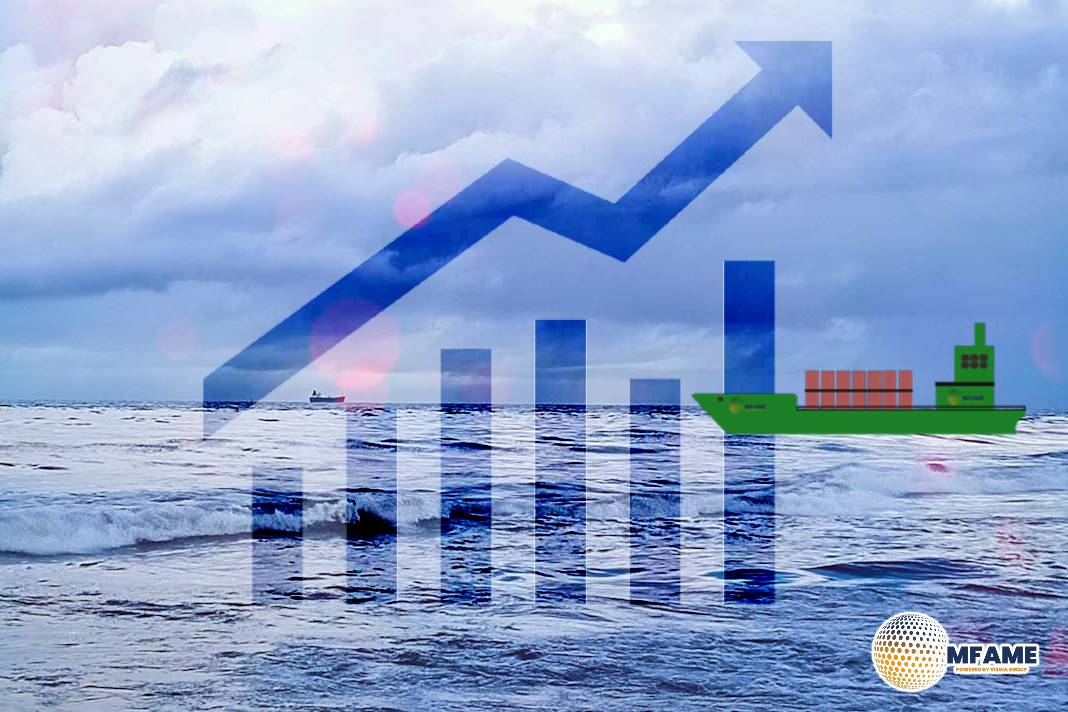A new report from venture capital firm UP. Partners take a look at the impact of the freight recession and new developments in the industry, reports Freight Waves.
The freight section of the recently released “Moving World Report 2024” from UP. Partners review the current depressed state of the freight market but first drive home the point that the cost trend has been in a downward direction for a long time.
In one of the first slides of the 143-page report, UP looks at the cost of moving freight via various modes going back to 1830. That means that the 1830 comparison works only for moving freight by sea since other technologies weren’t around then.
But it shows that the compound annual growth rate, or in this case, decline rate for every type of freight movement has been on a downward trajectory since they first came on the market.
For example, since 1830, sea freight has declined on average by 3.56% annually. For rail freight, it’s minus 3.92%; for air freight, it’s minus 6.17%; and for space freight, it’s minus 8.16%.
When the report shifts to current conditions, it opens with a quote from FreightWaves founder and CEO Craig Fuller. “This freight recession is unlike any other in history.”
The report illustrates that the depths of the freight recession trod on some familiar ground, ranging from the Federal Motor Carrier Safety Administration on the number of drivers and companies, to ACT Research data on the price of used trucks, as shown in FreightWaves SONAR.
But as an investor in new mobility technologies, UP also highlights specific developments that it sees as significant. The two that are featured are the Gatik robot truck for middle-mile freight transportation and the Range Energy electrified trailer.
Among some of the highlights of the review of the freight market:
- “Sea freight is faring no better and may have some other issues to contend with.” The report highlights the recent 10,000-person job cut at Maersk.
- Drought-related cutbacks at the Panama Canal and the war-related reductions through the Suez Canal are having a serious impact. As the report notes, the former carries 40% of U.S. container traffic and the latter carries 30% of global container traffic. A map spells out the impact of lower traffic through those passages. Avoidance of the Panama Canal and the Suez Canal for shipments from the U.S. Gulf Coast to Asia turns a 20-day shipment into 32 days.
- China’s shipbuilding capacity is 232 times that of the U.S., “and that’s not a typo,” the report advises readers.
As the report shifts to energy, it notes the paradox that reduced sulfur emissions coming from ocean shipping as a result of the IMO 2020 rule may be contributing to rising global temperatures. Lower ship emissions mean less smokestack emissions, and that means there are fewer ship contrails to block sunlight.
Did you subscribe to our daily Newsletter?
It’s Free! Click here to Subscribe
Source: Freight Waves

















Great delivery. Great arguments. Keep up the great work.
I saw similar here: Sklep internetowy
Undeniably imagine that that you stated. Your favorite reason seemed
to be on the net the easiest thing to take note of. I say to you, I definitely get annoyed at the same time as people consider
concerns that they plainly do not recognise about.
You controlled to hit the nail upon the highest and outlined out the whole thing without having side effect
, other folks could take a signal. Will likely be again to get more.
Thanks I saw similar here: e-commerce and also here: najlepszy
sklep
Wow, marvelous blog layout! How long have you been blogging for?
you make blogging glance easy. The total look of your site is fantastic, as smartly
as the content! You can see similar: sklep online and here najlepszy sklep